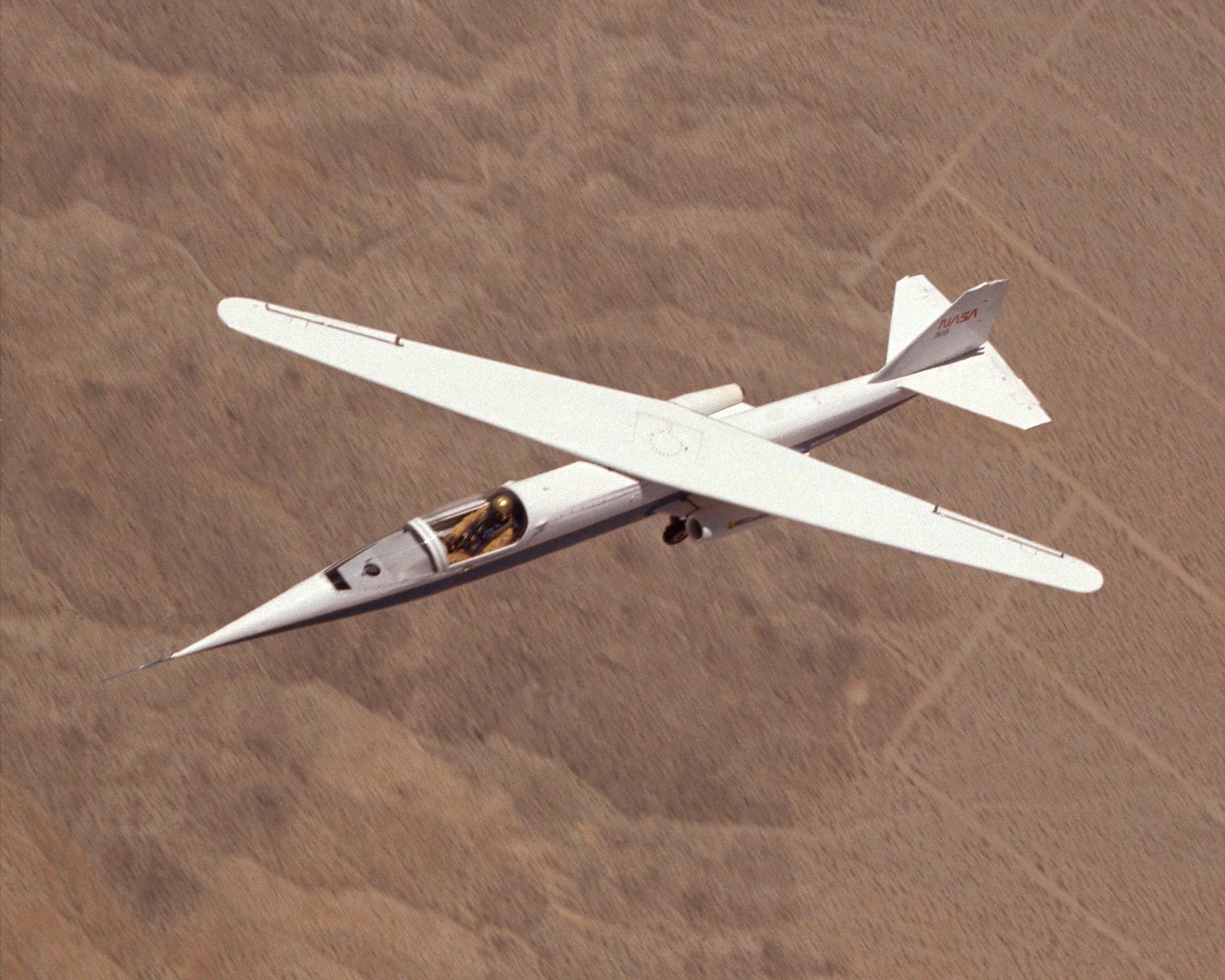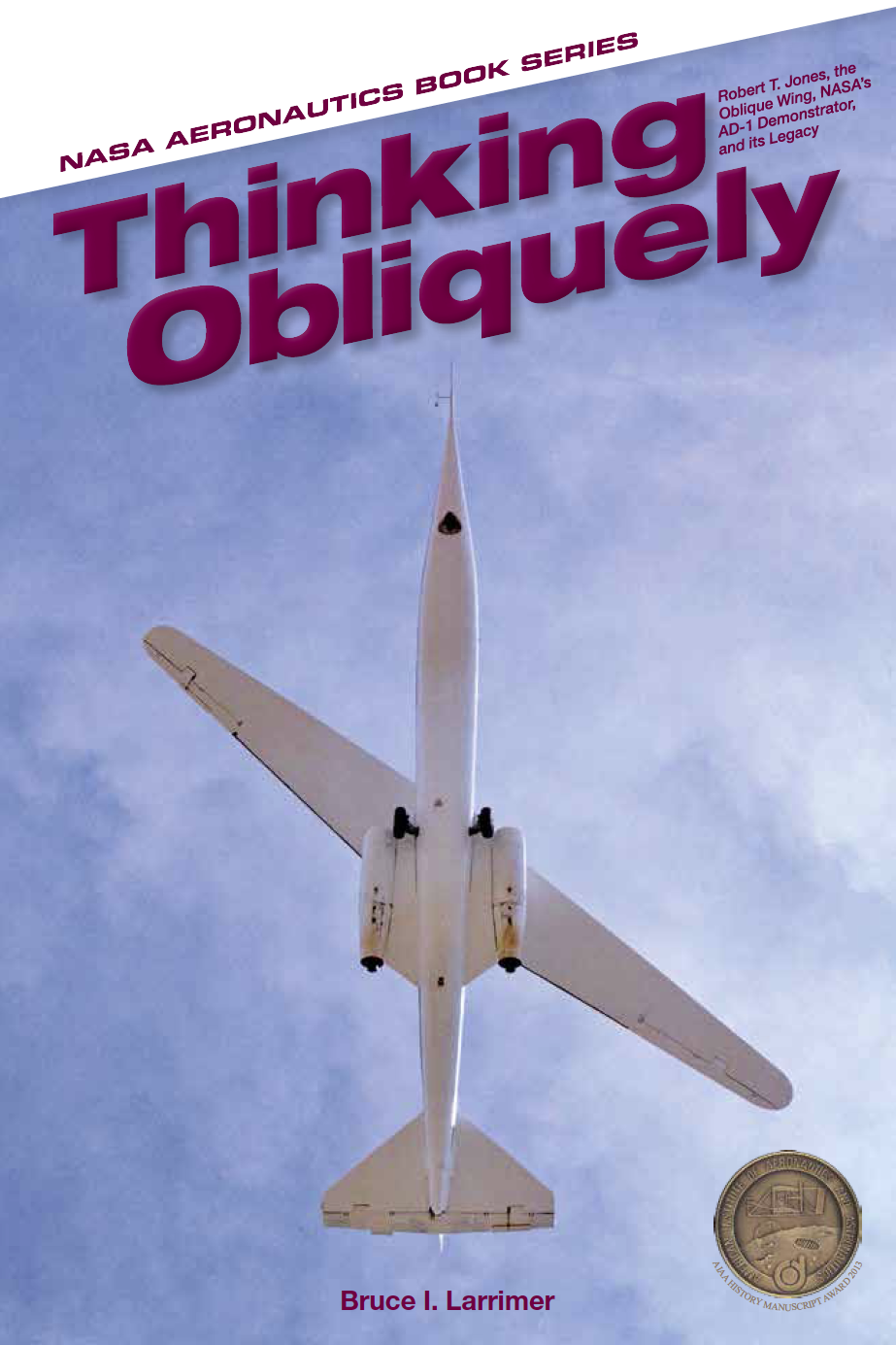- Joined
- 21 January 2015
- Messages
- 10,700
- Reaction score
- 12,374
Another cracking short form documentary from Mustard:
View: https://youtu.be/C_dNt4UEVZQ?si=1MNvedFlC2irVfaZ
Especially after the NASA tests have shown that it is seriously unstable...but nobody has tried to make a useful aircraft with that kind of wing.
Citation please, as this report (https://ntrs.nasa.gov/citations/19870009137) doesn't seem to show serious instability to be an issue.Especially after the NASA tests have shown that it is seriously unstable...
I don't remember in which technical analysis I read it, many years ago.Citation please

Other than the fact that this report was made long before fly by wire or fly by light was a thing, something that would radically change the calculations here.I don't remember in which technical analysis I read it, many years ago.
However, NASA's site atsays something related (but admittedly less specific) at end of page: "the unpleasant flying characteristics of the AD-1 at extreme wing-sweep angles may have discouraged aircraft designers from adopting this configuration." YMMV
AD-1 Oblique Wing - NASA
The oblique wing was the brainchild of NASA aeronautical engineer Robert T. Jones, whose analytical and wind tunnel studies at the NASA Ames Research Center,www.nasa.gov
Indeed. A good many 'paths not taken' weren't taken because they were dead ends or money pits, or...
- It's technologically immature or unfeasible
- It's economically unnecessary or there is no demand
It's significantly simpler than regular variable-geometry wings. Only one actuator, no wing sweep equalizers, etc.I can appreciate NASA having tested the AD-1, and even Rockwell having been crazy enough to once suggest an oblique wing fighter to meet a Navy requirement, but I have just never been able to take this concept very seriously. In my amateur opinion, if you're going to pay the cost in money and increased weight for the potential benefits you might as well pay a bit more and "do it right" with a variable sweep wing instead.
There's frequently very little reason for defense contractors to consider a lower-cost solution.It's significantly simpler than regular variable-geometry wings. Only one actuator, no wing sweep equalizers, etc.
So it makes sense to try that idea.
I'm still surprised that nobody has made any glide bombs or cruise missiles with an oblique wing for that reason.
I'm still surprised that nobody has made any glide bombs or cruise missiles with an oblique wing for that reason.
Not sure I entirely agree with that, but I can take it under advisement.There's frequently very little reason for defense contractors to consider a lower-cost solution.
According to another video, the AD-1 had low-speed stall characteristics as nasty as most other sharply-swept wings. Add in asymmetric handling and you get a truly nasty airplane too complex for the average human pilot. Basically, any turbulence migrated span-wise to the rear-most wing-tip, which made the rear-most wing-tip stall first, creating a pitch-up moment. That pitch-up moment can create an un-recoverable stall-spin.Other than the fact that this report was made long before fly by wire or fly by light was a thing, something that would radically change the calculations here.
Also it was a poorly funded test program with a somewhat cobbled together test aircraft.
Oh, eeeeeeeeeeeeewwwwwww.... *hurk*According to another video, the AD-1 had low-speed stall characteristics as nasty as most other sharply-swept wings. Add in asymmetric handling and you get a truly nasty airplane too complex for the average human pilot. Basically, any turbulence migrated span-wise to the rear-most wing-tip, which made the rear-most wing-tip stall first, creating a pitch-up moment. That pitch-up moment can create an un-recoverable stall-spin.
Add in pitch/roll coupling (asymmetric wing-sweep) and you get some truly nasty low-speed handling.
Folding oblique wings I'd like to see on a Falcon like rocket.
No landing legs...instead you'd fold out scissors style on a pivot stop and wheels beneath the octoweb...tail above the intertank and tail wheel below.
The engine block is the nose...and it resembles a long lanky giant radial coming in a tad like B-52.
Sim and Curry noted:
Although the AD-1 geometry was chosen for its similarity to supersonic oblique-wing transport designs, many of the maneu-vers performed to evaluate the handling qualities were not transport-aircraft maneuvers. For example, windup turns are often used to evaluate the capability of a maneuvering airplane. Because deficiencies in transport-aircraft handling qualities tend to be amplified in maneuvers like windup turns, these types of maneuvers are excellent for highlighting deficiencies and for ascer-taining the need for stability augmentation.47

